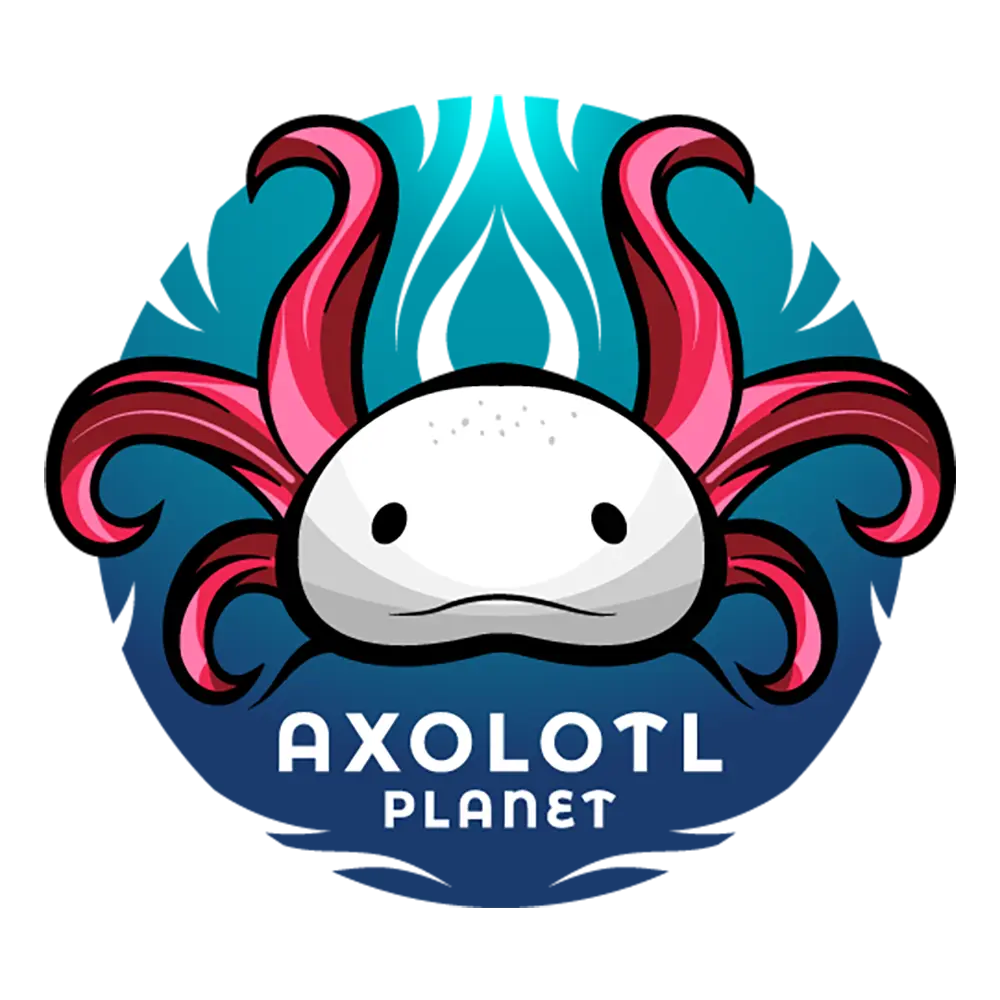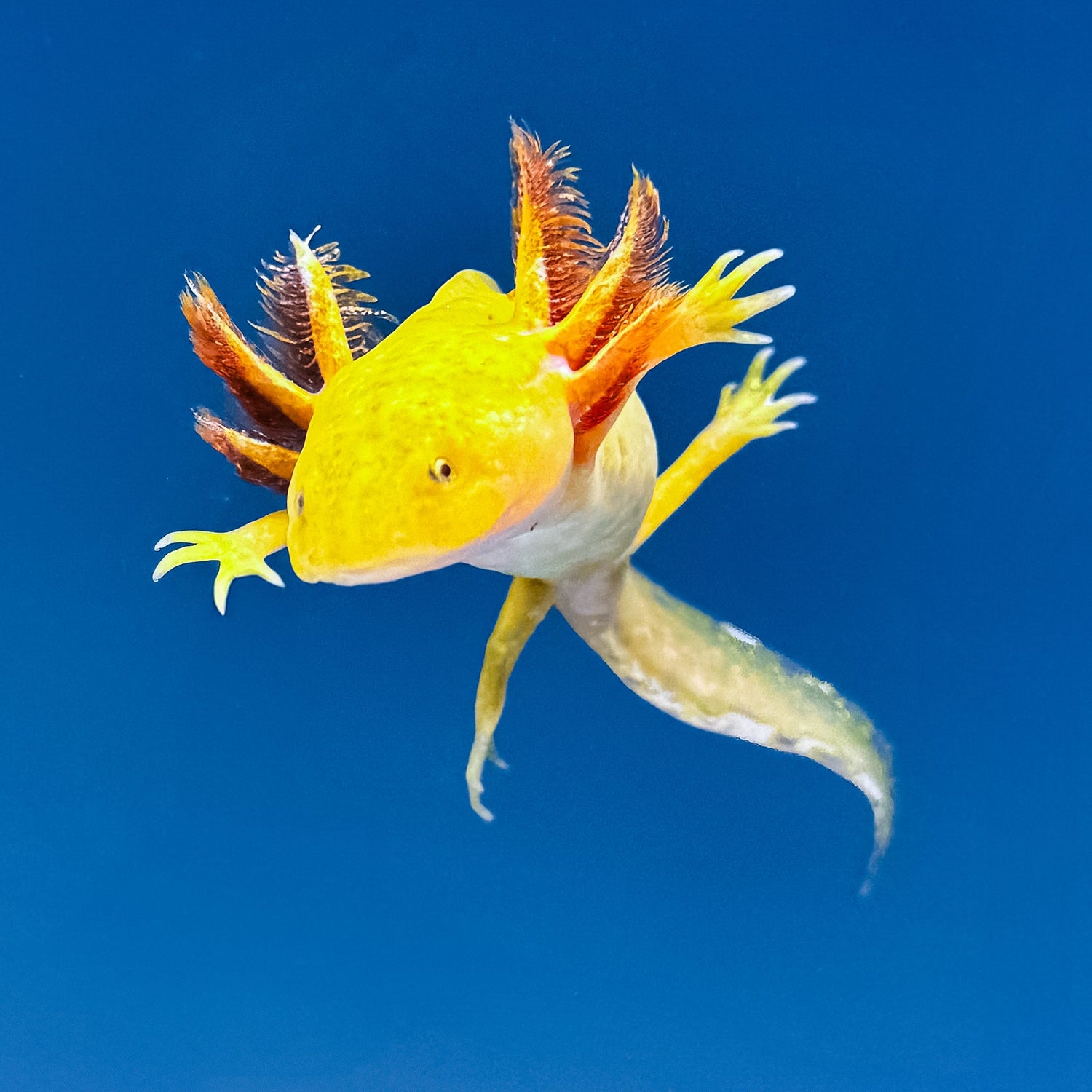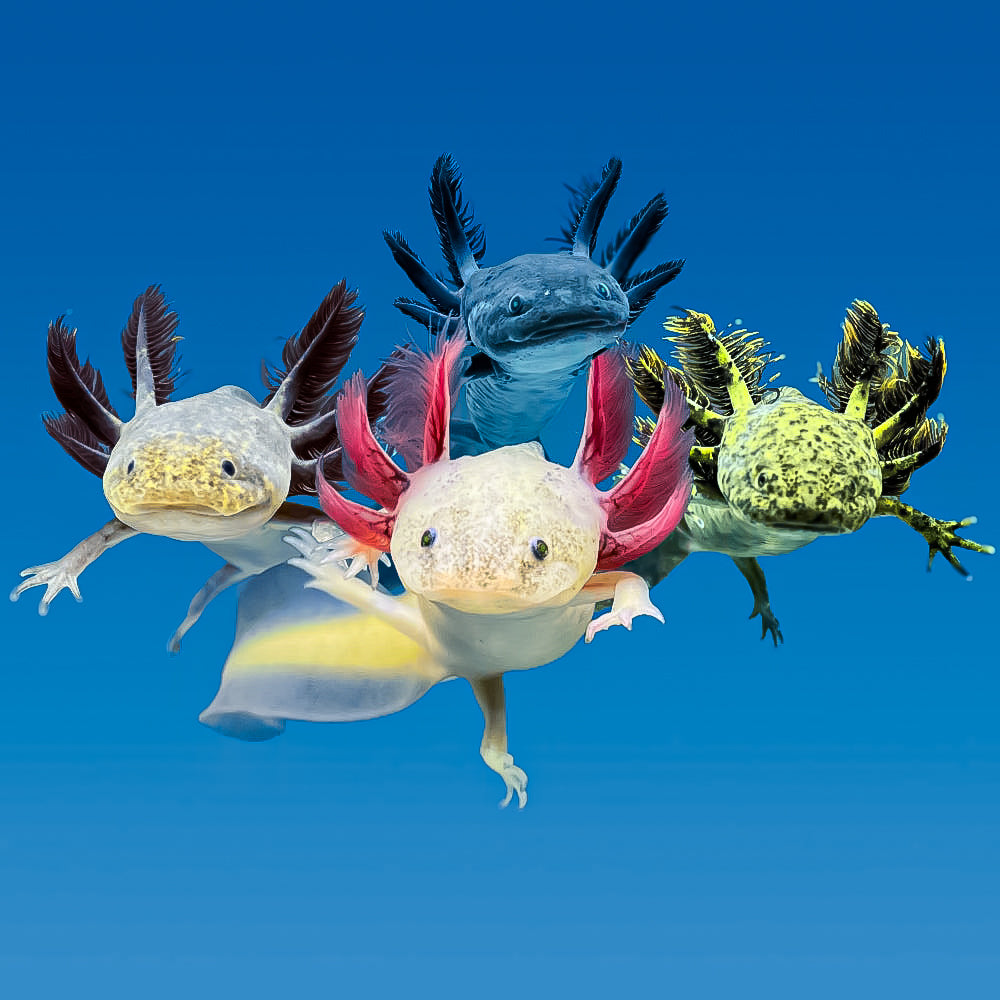A Golden Gem of the Aquatic World
The Hypomelanistic Axolotl is a truly mesmerizing aquatic pet that captivates hobbyists with its glowing golden-yellow body and deep red, feathery gills. A rare morph of the beloved Ambystoma mexicanum, this axolotl offers the perfect blend of visual appeal, scientific intrigue, and low-maintenance care. Ideal for beginner and experienced aquarists alike, it’s a standout addition to any cool-water aquarium.
What Makes the Hypomelanistic Axolotl Unique?
This color morph retains partial melanin, giving it a soft, sun-kissed glow that sets it apart from albino varieties. Its external gills are striking—bushy, deep red, and highly functional, used for breathing in the water. Axolotls remain in their juvenile, aquatic state for life (a condition called neoteny), which gives them their charming, wide-headed, finned-tailed appearance.
- Scientific Name: Ambystoma mexicanum
- Common Names: Hypomelanistic Axolotl, Golden Axolotl
- Origin: Native to the ancient canals of Lake Xochimilco, Mexico
- Size: 9–12 inches in adulthood
- Lifespan: 10–15 years with proper care
- Temperament: Peaceful, slow-moving, and solitary
Care Requirements
Despite their exotic looks, Hypomelanistic Axolotls are surprisingly easy to care for when their needs are met. Their most important requirement is cool, clean water with minimal current.
- Tank Size: Minimum 20 gallons for a single adult
- Water Temperature: 60–68°F — avoid heat!
- pH Range: 6.5–7.5
- Water Hardness: Moderate (7–14 dGH)
- Filtration: Low-flow sponge or baffle-filtered systems are ideal
- Substrate: Bare bottom or fine sand (never gravel due to risk of impaction)
These animals are sensitive to water quality. Make sure to monitor ammonia, nitrites (0 ppm), and nitrates (<20 ppm) with regular testing and water changes.
✅ For a complete deep-dive into axolotl tank setup, feeding, health, and troubleshooting, read The Best Axolotl Care Guide in the World.
Feeding
Axolotls are carnivores and thrive on a diet rich in animal protein. They feed by suction, snapping up food with quick movements of their wide mouths.
- Staple Diet: Earthworms (preferred), high-quality axolotl pellets
- Other Foods: Bloodworms, blackworms, small pieces of shrimp or tilapia
- Feeding Frequency: Daily for juveniles, 2–3 times per week for adults
Behavior and Compatibility
Hypomelanistic Axolotls are calm, solitary creatures best kept alone or with other axolotls of similar size. They may nip at smaller tankmates or even other axolotls if housed improperly.
- Ideal Tankmates: Other axolotls of similar size (with care)
- Avoid: Fish, shrimp, or anything small enough to fit in their mouths
- Activity: Crepuscular (most active during dusk and dawn)
Where to Buy a Hypomelanistic Axolotl
Looking to add this stunning morph to your tank? Check out the Hypomelanistic Axolotl for sale at Axolotl Planet. Their axolotls are responsibly bred and shipped with expert care—ideal for new and seasoned axolotl keepers.
Regional Considerations for U.S. Keepers
Many regions in the U.S. have warmer ambient temperatures that can push your tank above the safe range for axolotls. In warmer months or southern climates, consider using a chiller or fan-driven evaporation to keep temps below 70°F.
Also, if your tap water is hard, use dechlorinated or partially RO-treated water to soften without losing mineral content.



Leave a comment
This site is protected by hCaptcha and the hCaptcha Privacy Policy and Terms of Service apply.